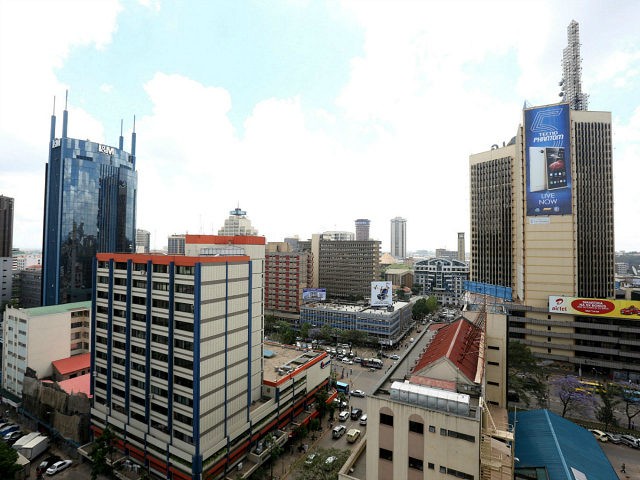Two Iranian attorneys and their Kenyan driver were arrested in Nairobi, Kenya, and charged Thursday with illegally filming around the nation’s Israeli embassy, gathering film “for the use in the commission of a terrorist act.”
The government of Iran has identified the two men, Sayed Nasrollah Ebrahimi and Abdolhosein Ghola Safafe, as attorneys in Kenya to defend two other Iranians convicted of planning a terrorist attack and called the arrests a “misunderstanding.
According to Al-Arabiya — based in Saudi Arabia, Iran’s most prominent regional rival — the two men and driver Moses Keyah Mmboga were arrested Tuesday driving around in an official Iranian embassy car. The men possessed video footage of the Israeli embassy which prosecutors allege was intended to be used in planning a terrorist attack against the embassy.
The Iranian government has denied the charges and claimed that Ebrahimi and Safafe were in Nairobi to help two other Iranians with their terrorism cases. The men, the Times of Israel quotes an Iranian Foreign Ministry spokesman as saying, are “official lawyers of the justice ministry… who traveled to Nairobi on behalf of the families of two Iranian prisoners in Kenya for a legal follow-up.” The arrest, he added, was a “misunderstanding,” and he called for Kenyan officials to release the men. The newspaper identifies the other two men as Ahmad Mohammed and Sayed Mousavi.
Mohammed and Mousavi initially received two life sentences in 2013, though the Times of Israel reported that the men were now serving 15-year sentences, for plotting a bombing. While prosecutors did not confirm the target, the Israeli embassy was high on the list of potentially threatened buildings. The men were found carrying 33 pounds of explosive material, and investigators found that they had made contact with an al-Qaeda-affiliated individual in the country.
“I shudder to imagine the amount of damage that could have been seen,” judge Kiarie Waweru Kiarie said at the time.
The Iranian government objected to the sentencing. “The two citizens entered Kenya on a valid visa for tourism purposes last year and were arrested as part of a pre-planned plot with baseless accusations,” Iranian Foreign Ministry spokesman Ramin Mehmanparast said at the time.
Both the terror plot allegedly prevented this week and the 2013 incident share strong resemblances to other suspicious Iranian behavior around Israeli embassies abroad. Shortly before Kenya arrested Mohammed and Mousavi, international actors accused Iran of plotting to bomb the Israeli embassies in India and Georgia on the same day. Calling Iran “the greatest exporter of terrorism in the world,” Israeli Prime Minister Benjamin Netanyahu noted that, “in all these cases, the elements behind the attacks were Iran and its proxy, Hezbollah.”
Iran responded to these accusations by accusing Israel of plotting the bombings against itself to curry international favor.
Last year, Uruguayan officials were forced to order special police protection for the Israeli embassy in Montevideo and for Jewish activities around the city after police found an undetonated explosive by that embassy. Police identified Ahmed Sabatgold, a senior Iranian diplomat, as the man behind the bombing. Before working in Uruguay, Sabatgold had worked as former Iranian president Mahmoud Ahmadinejad’s Spanish translator in Venezuela. Sabatgold fled the country shortly after police found the bomb in question.
In response to this incident, Iran once again accused Israel of attempting to bomb its own facility.
Perhaps Iran’s most formidable terrorist plot abroad against Israel in recent memory is the 1994 bombing of the Argentine-Israeli Mutual Association (AMIA), the deadliest act of terror in the Western Hemisphere before September 11, 2001.
Argentine investigators found solid evidence linking the bombing to senior Iranian officials, though the investigations stalled under leftist president Cristina Fernández de Kirchner as she attempted to strengthen ties with Iran. The lead investigator who exposed the ties to Tehran, Alberto Nisman, was found dead of a gunshot wound the night before he was to present his findings to Congress in January 2015.

COMMENTS
Please let us know if you're having issues with commenting.